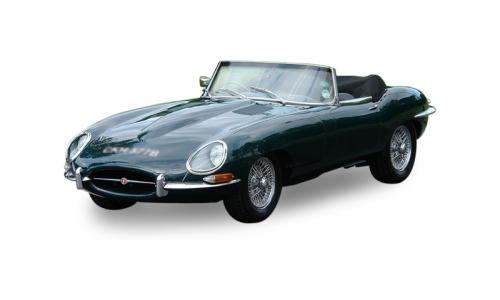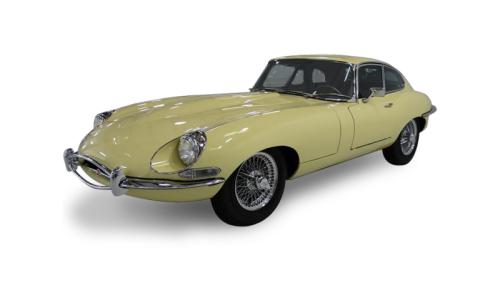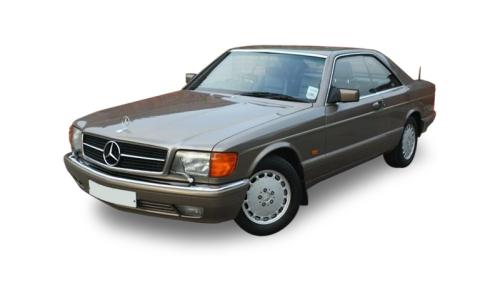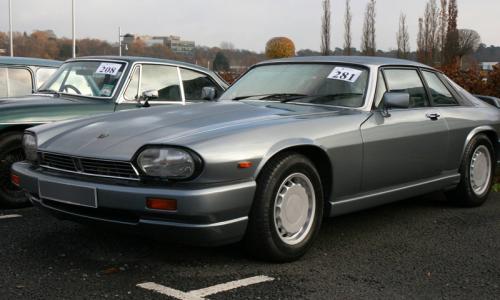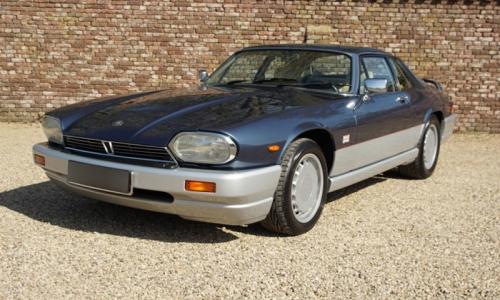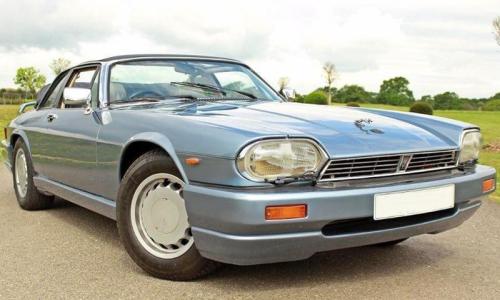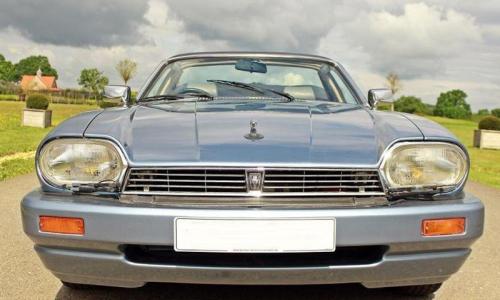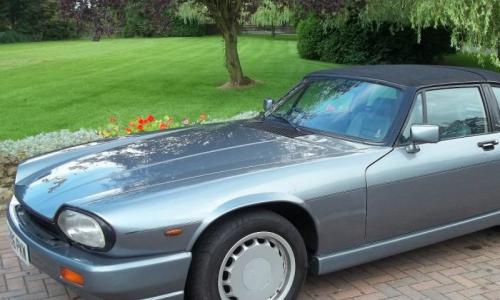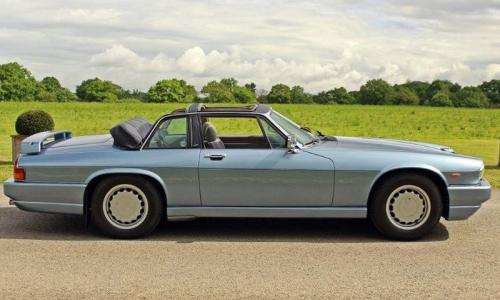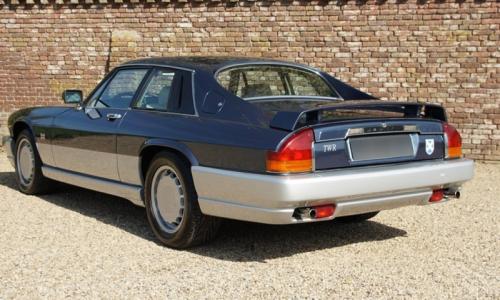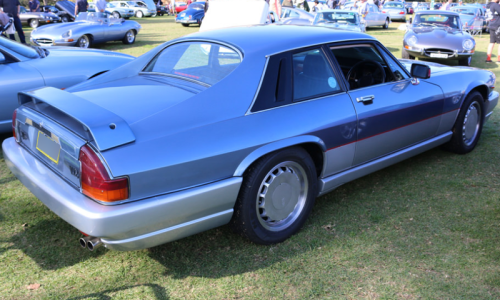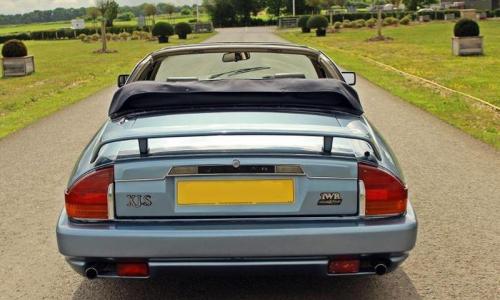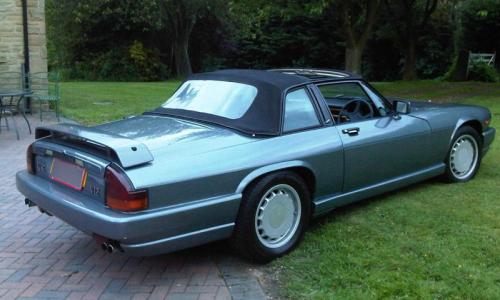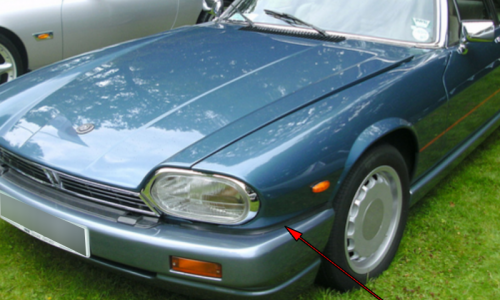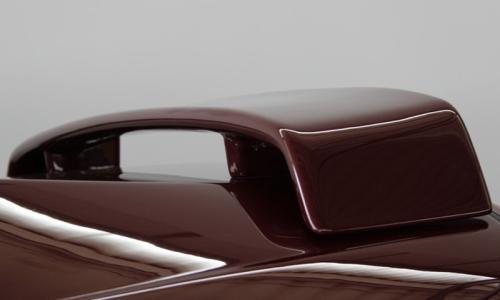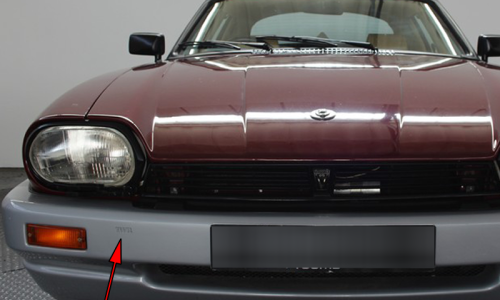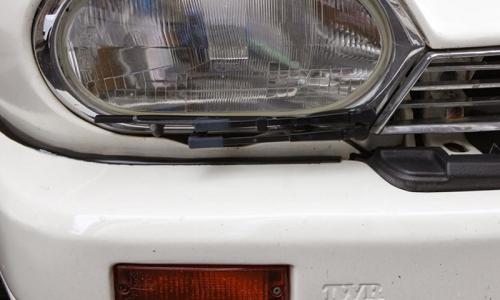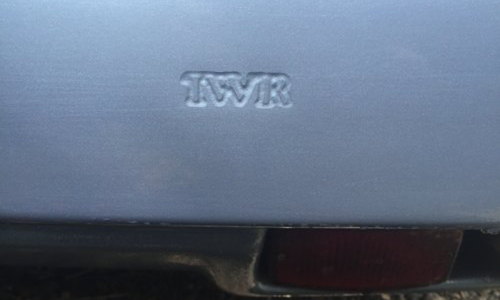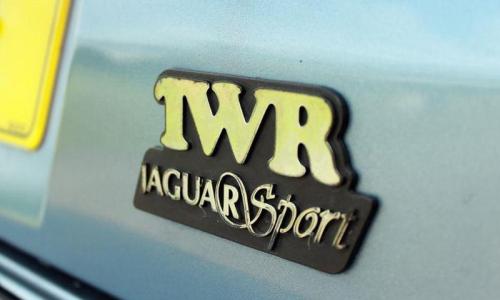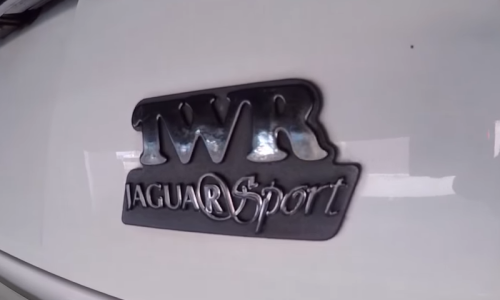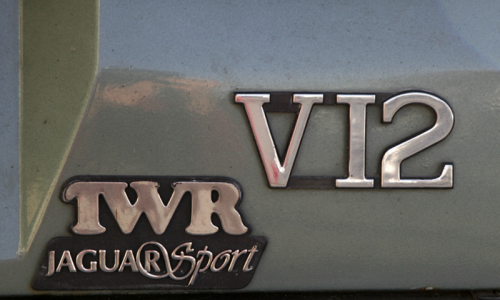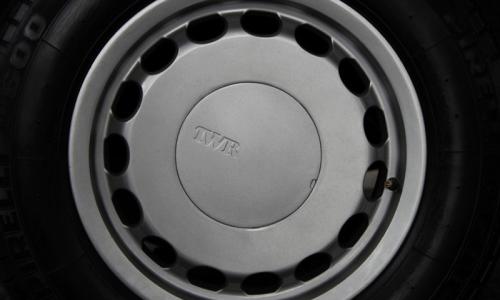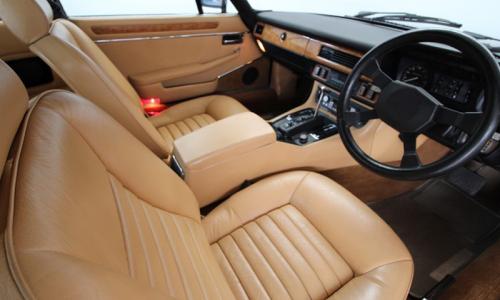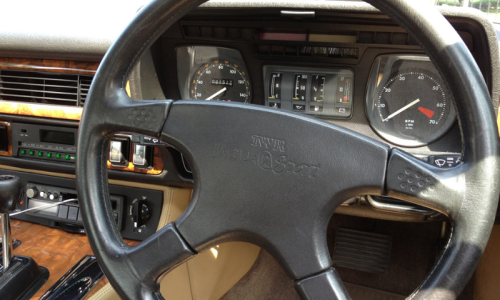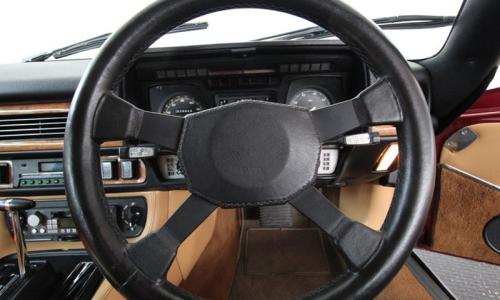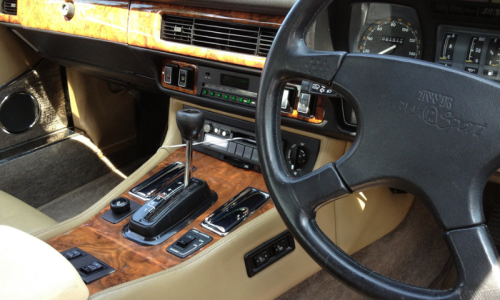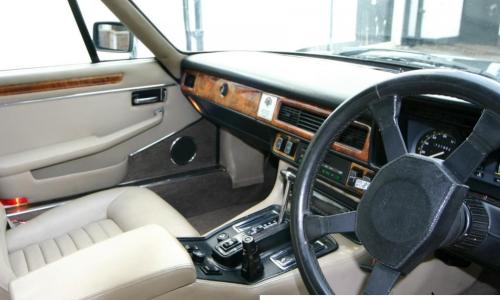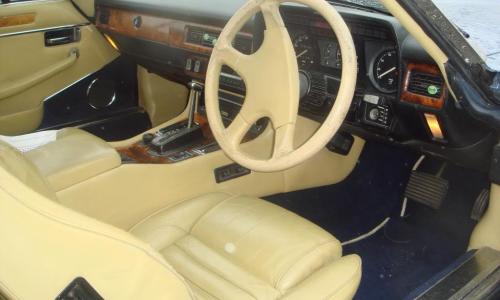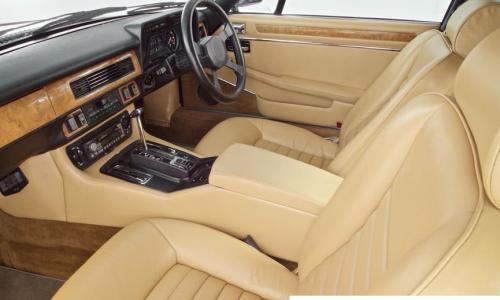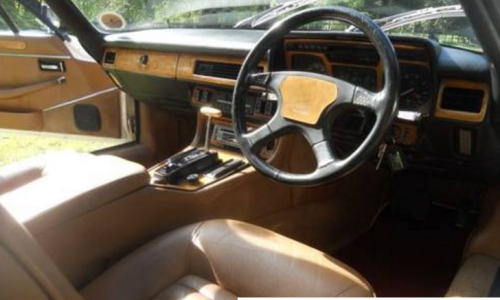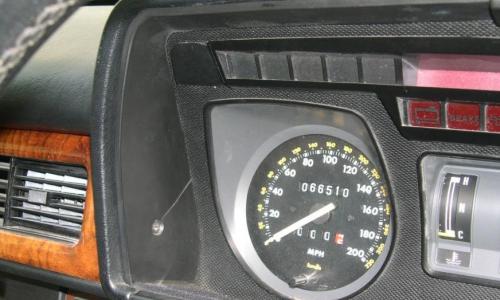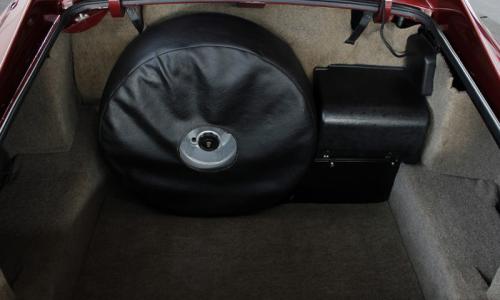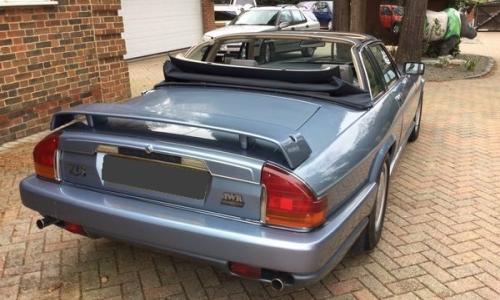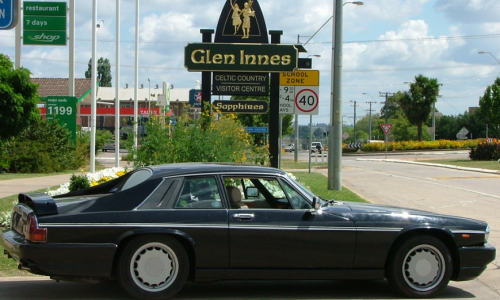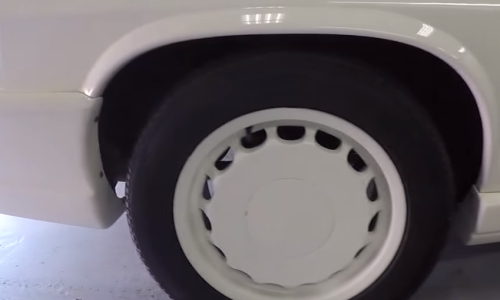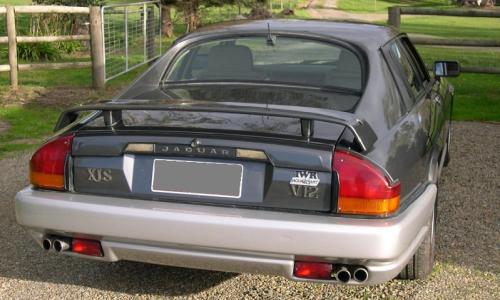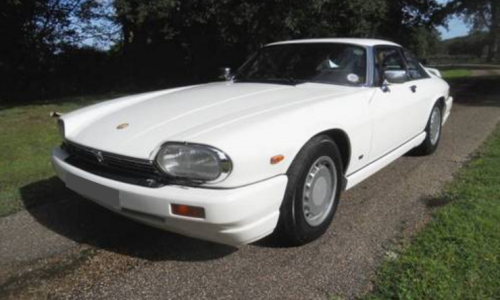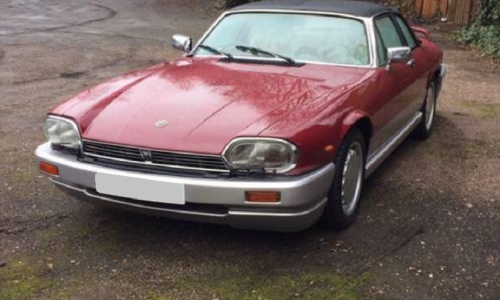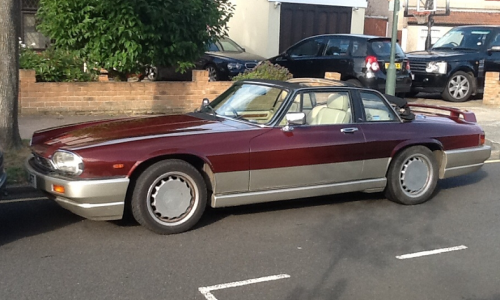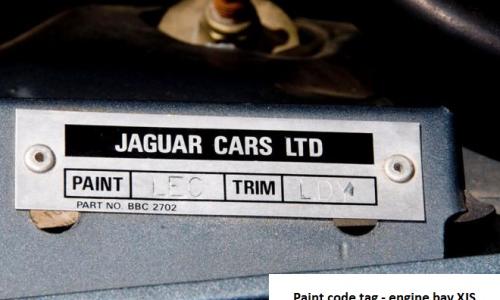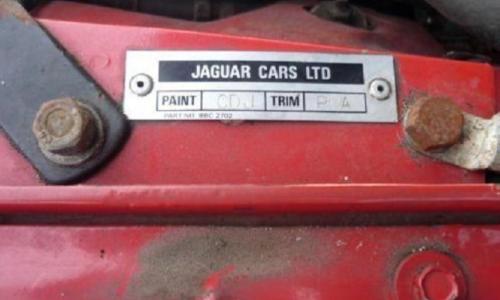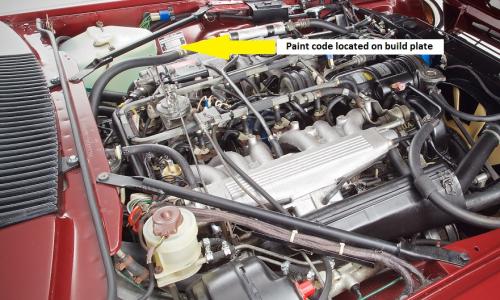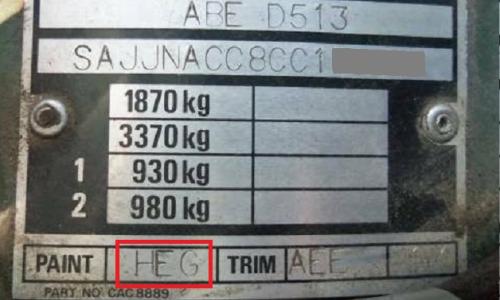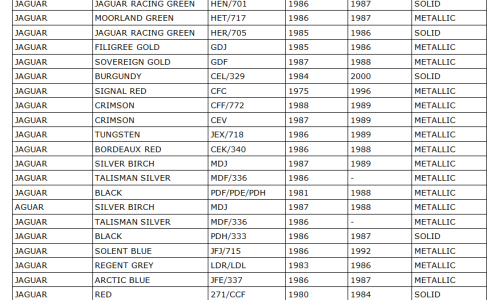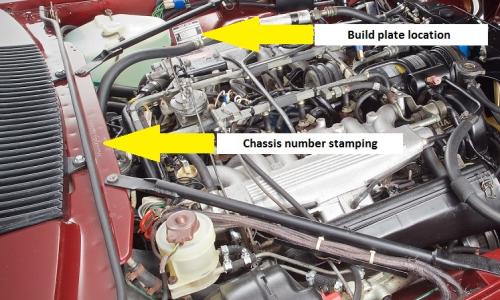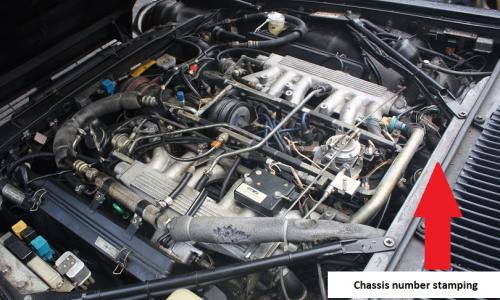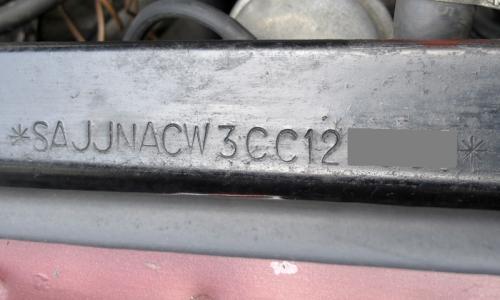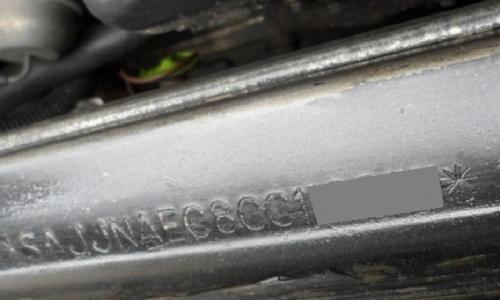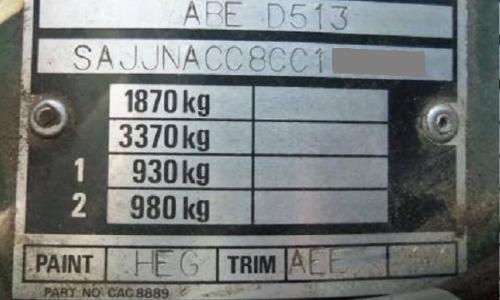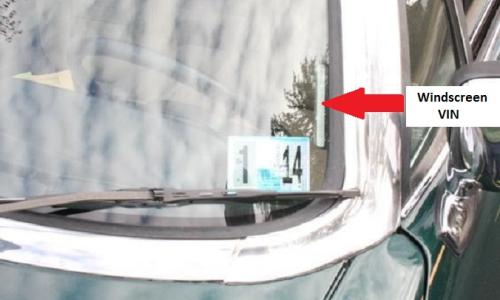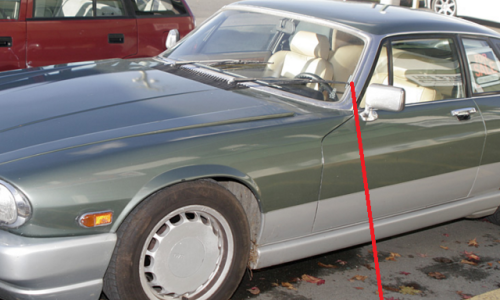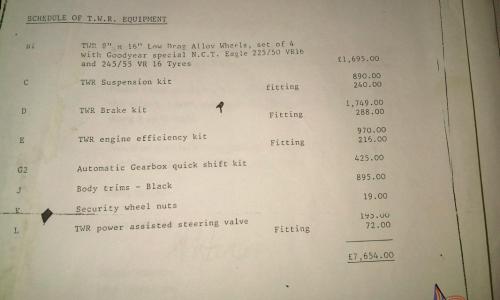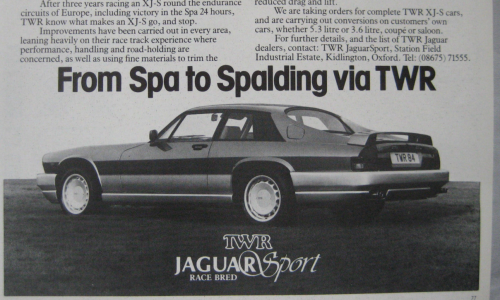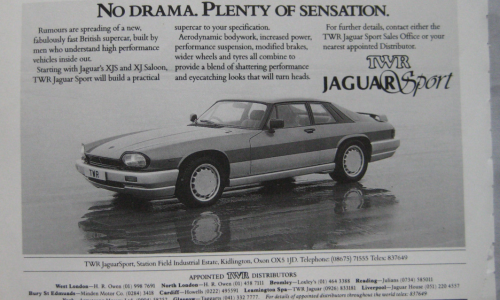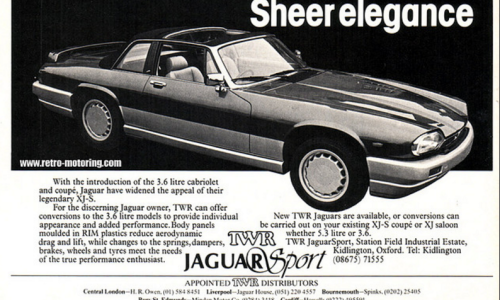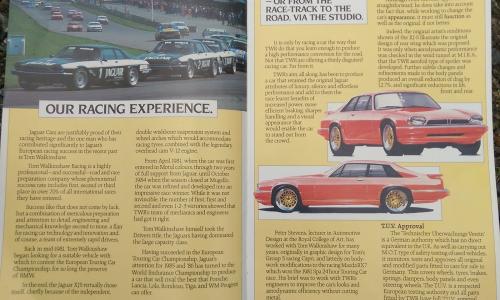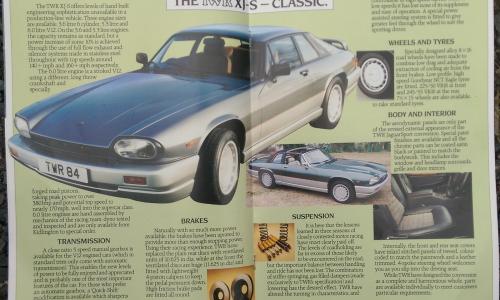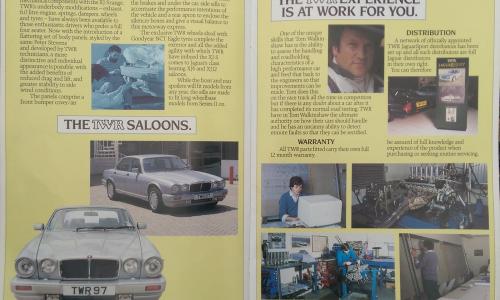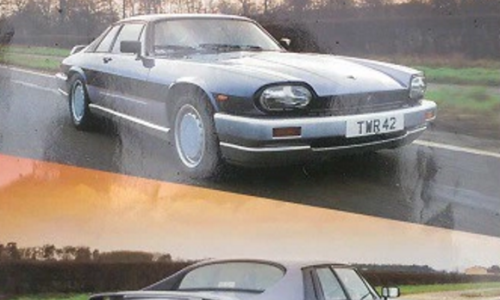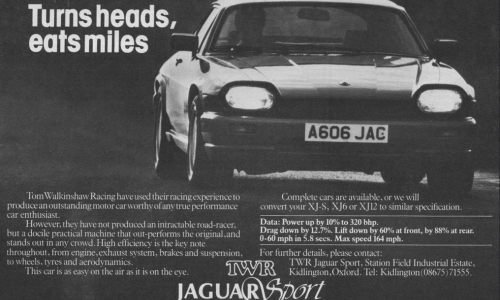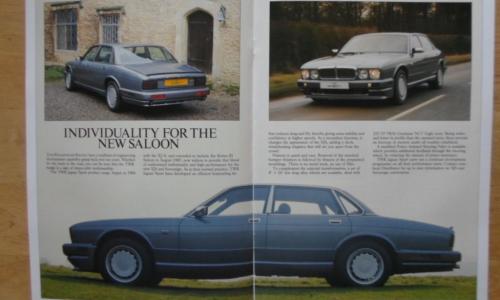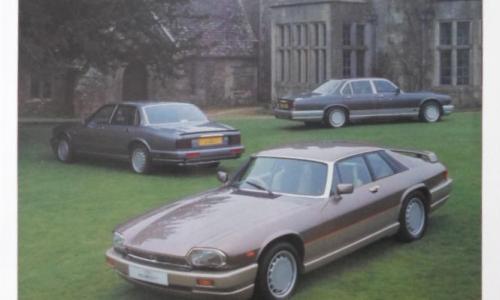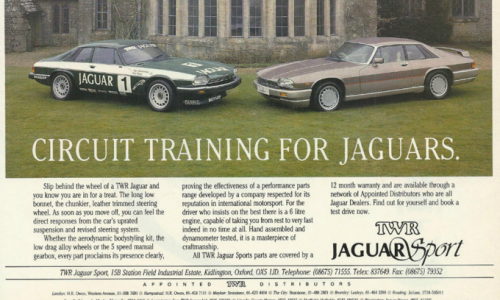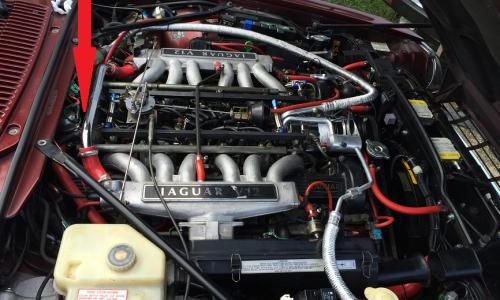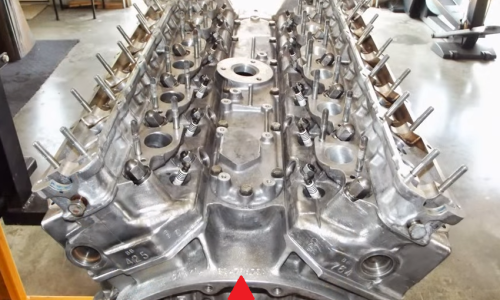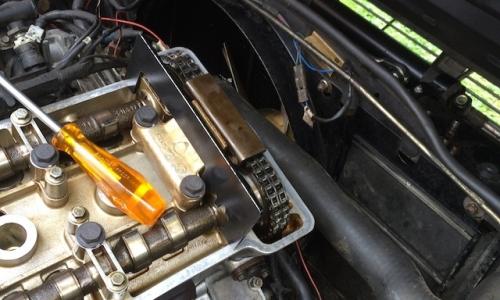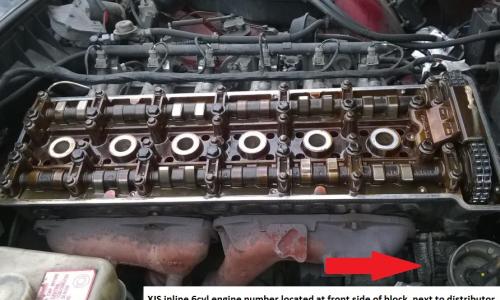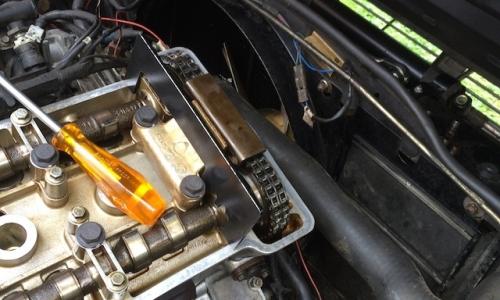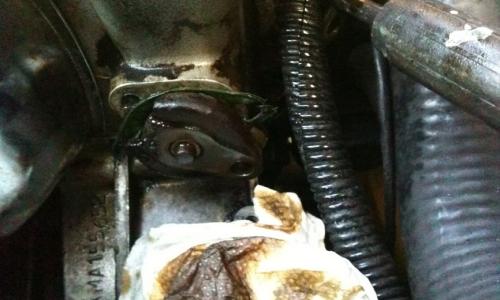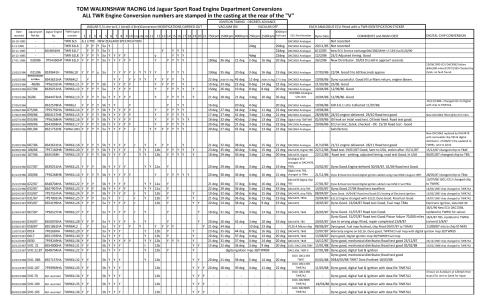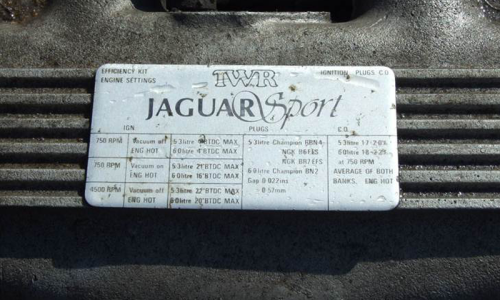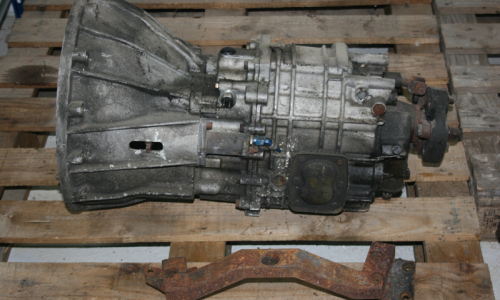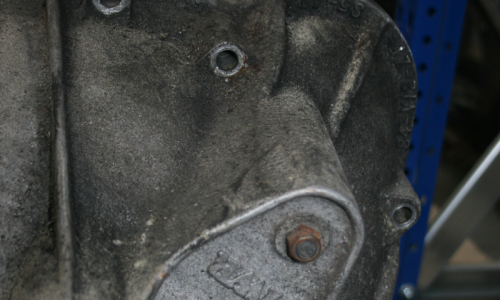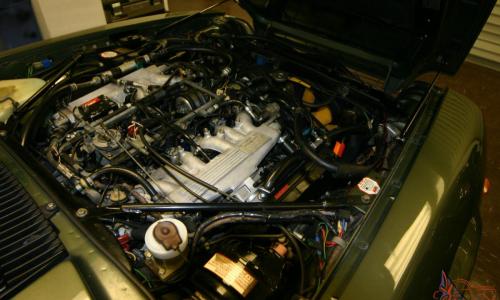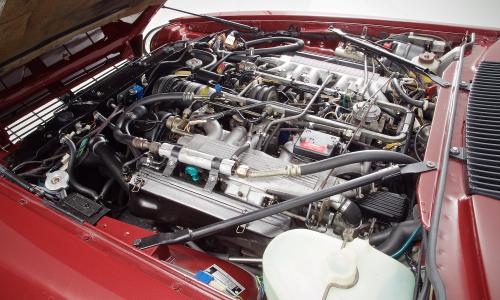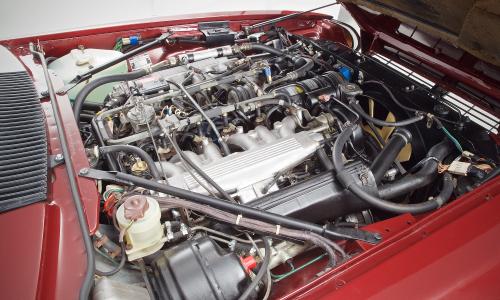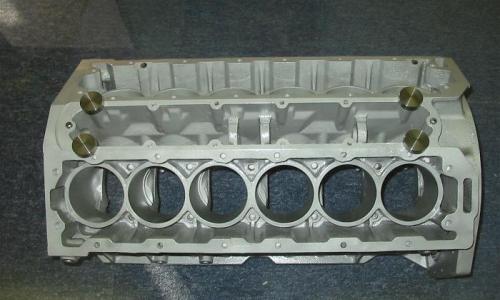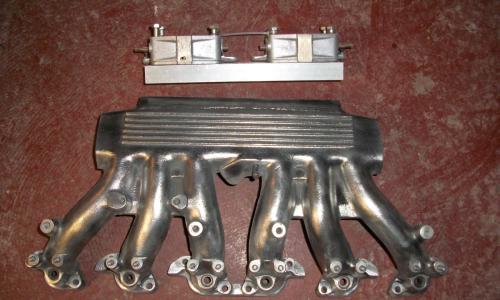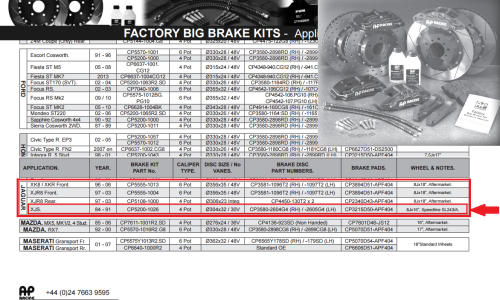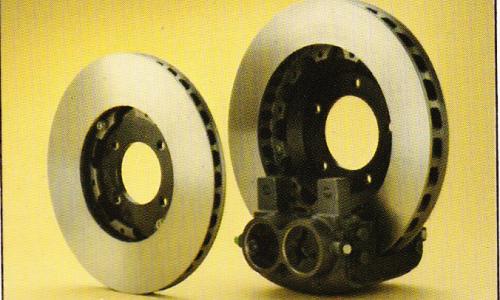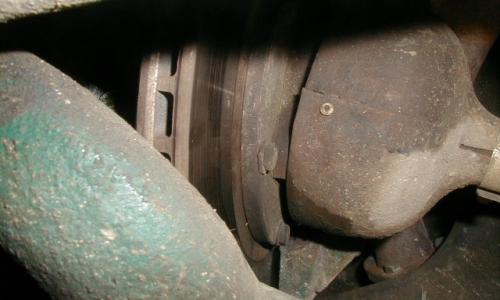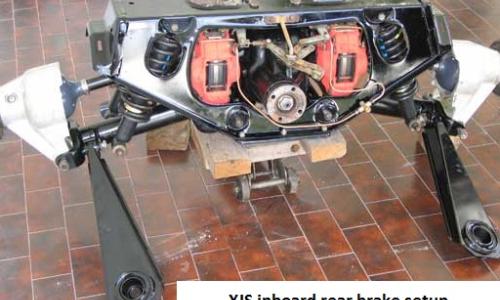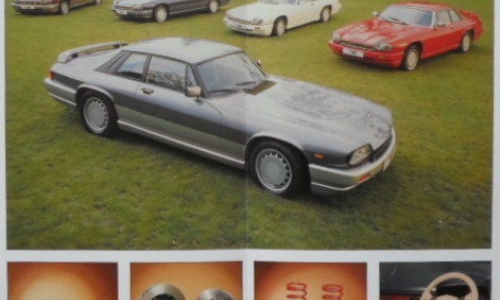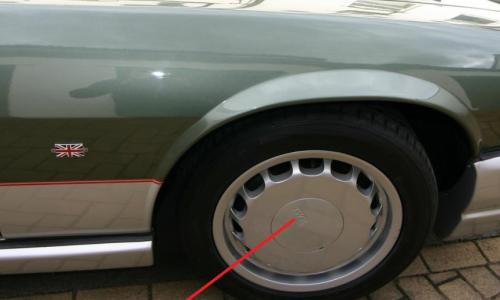INFO GUIDE: 1984 - 1988 Jaguar XJS (TWR Enhanced)

- Description
- 1. Exterior Features - XJS TWR (1984 - 88)
- 2. Interior Features - XJS TWR (1984 - 88)
- 3. Paint Colours - XJS TWR (1984 - 88)
- 4. Chassis & Body Number - XJS TWR (1984 - 88)
- 5. TWR Option Codes - XJS TWR (1984 - 88)
- 6. Engine & Gearbox - XJS TWR (1984 - 88)
- 7. Mechanical Features - XJS TWR (1984 - 88)
- 9. References - XJS TWR (1984 - 88)
Description
This identification guide has been written for the first series of Jaguar XJS coupe and cabriolet cars enhanced by Tom Walkinshaw Racing (TWR). Specifically, this guide deals with the cars made by TWR prior to the 1988 formation of 'JaguarSport' (the joint venture between Jaguar and TWR). From the end of 1984, TWR (under the name of 'TWR JaguarSport' but prior to the joint venture), offered sporting versions of the XJS. Various bodywork, trim and engine upgrade options were available on both the 3.6 litre 6-cylinder and 5.3 litre V12 vehicles. These cars are particularly unique and rare, often misrepresented and misunderstood due to the poor record keeping for the pre-1988 cars. Further confusion is caused by the production of later XJS 'JaguarSport' cars to similar specifications.
The TWR XJS vehicles started out as a standard XJS coupes or cabriolets, and were sent by dealers or existing owners to the TWR factory for heavy modification to the customer's personal liking. There are a number of unique and important features distinguishing these from the standard XJS. This guide outlines a number of features unique to the original pre-1988 Jaguar XJS TWR vehicles.
Production numbers and markets:
- Total production:
The TWR Jaguars were available through approximately 10 dealerships across the UK, with a number of left hand drive cars delivered to Europe and the USA. Specific export numbers are not known, and several British cars have since made their way to markets such as Australia and New Zealand. Unfortunately, even Jaguar Heritage has stated that they are not aware of any data on the pre-88 TWR cars. This was largely due to the fact that dealers and customers could both deal with the TWR factory directly. We have, however, confirmed from an old article, that the pre-'JaguarSport' TWR factory had capacity to produce three cars per week (thanks to ‘Motorsport Magazine’, February 1984). Assuming full demand production from late 1984 – 1988, this would indicate that it is likely only several hundred were produced. This is consistent with many estimates which we have seen on Jaguar forums during our research.
- V12 6.0 litre production:
It was widely believed that only a small portion of the several hundred cars produced included the 6.0l engine upgrade. Since publising this information guide, we have been contacted by several engineers who worked in the TWR factory and have been able to share with us some of their intricate knowledge. Importantly, one of those engineers has provided a table confirming 39 vehicles that received the 6.0 litre conversion. The table includes the majority of the engine numbers for those converted V12 units. A copy of this table is provided in Section 6 of this guide - "engine and gearbox numbers".
Period of manufacture:
No specific production dates have been confirmed, however, it is generally accepted that the pre-'Jaguar-Sport' cars were produced from late 1984 through to late 1988, just after 'JaguarSport' was formed. Jaguar Sport was formed in May 1988, however, it is cited in “Sports Sponsorship and Brand Development: The Subaru and Jaguar Stories“, that production of individual vehicles (not under the 'JaguarSport' Marque) continued until late 1988, probably due to pre-existing orders with customers. It is also should be considered that pre-1984 cars may have also been received TWR upgrades, as the conversions were not necessarily limited to new vehicles from 1984 - 1988
If you have further information on the vehicles covered by this guide, please get in contact with us. This information guide has been written based on a variety of online and published sources, and enthusiast input. You should not rely on this guide to make any purchasing decision and we make no representation as to the accuracy of the information provided. You should always make and rely on your own enquiries when purchasing a vehicle.
The early TWR cars had many features similar to their 1988 onward 'JaguarSport' counterparts, and many features noted here are not necessarily unique to the 1988 or earlier TWR cars (unless specified). Many XJS cars have been fitted with TWR body kits and Speedline wheels, and aftermarket kits are still available. Therefore, those exterior features must be read in context with other identification criteria to establish whether a vehicle is a genuine TWR conversion.
- Two body styles were available for the early TWR cars, both of which were pre-facelift cars:
- The XJS coupe; and
- XJ-SC convertible (convertible with window frames and integrated roll bar).
- Wheels: All TWR vehicles were fitted with 'Speedline' brand italian made alloys. The wheels have “TWR” cast into the centre caps (as opposed to the later “Sport” embossed centre caps). Two wheel size options were available:
- 15 inch x 8 inch; or
- 16 inch x 8.5 inch.
- Tyres: Originally fitted with ‘Goodyear Eagle’ or ‘Pirelli P7’ tyres with 225 or 245 section and VR rating.
- Fibreglass side mouldings / side skirts (produced by reaction injection moulding method). The body kits originally had a black seam / seal between the guards / bumper (see example in image). Those seals often went missing on genuine cars. However, it should be noted that non-genuine kits are common and will likely not have those original seal trims).
- The body kit includes a reinforced moulded front air dam and spoiler/splitter, tailored rear bumper with exhaust exit apertures and rear integrated fog lights. The majority of original front and rear bumpers sighted during our research have “TWR” embossed. This occurred on the RHS of the front and rear bumpers (see image gallery). Aftermarket kits generally didn't receive this feature.
- Two-tone paint was most commonly applied to the early TWR cars, being the factory option colours (TWR only painted the bumpers and lower body panels, not the main body of the vehicles).
- Rear spoiler / aerofoil.
- Many early cars (but not all) had a full chrome delete completed by TWR. This included blacked-out grille, headlight surrounds and window trims. This was an option offered by TWR replacing all of the chrome / metal finishes with either a satin black finish, or in the same body colour as the car.
- Early TWR cars should be badged simply as the "XJS" (as opposed to "XJR-S" on later models). Rear trunk lid badging is, however, inconsistent between the early TWR vehicles we have viewed. Often, the prominent “HE” or “V12” badge will appear, and above that sits a “TWR JaguarSport” badge. Some cars have only the “TWR JaguarSport” badge, and others have no TWR badging at all. “TWR” print on the black area above number plate, between the reverse lights (in place of “Jaguar”) has also been seen in one instance. Despite these particular cars pre-dating the 'JaguarSport' joint venture, cars were already badged (at the rear) as 'TWR JaguarSport' as early as 1984, and advertised in the same way through official brochures.
- Generally the front grille emblem will be the standard factory item. However, an emblem reading "TWR V12" is believed to be a very rare option and we have seen only one or two vehicles with this applied (possibly unique to the early TWR cars).
Early XJS TWR enhanced cars had the following interior features:
- Unique trim was applied to TWR cars, and Jaguar's 'Brown's Lane' trim shop was used to produce the interior finishes.
- Early TWR cars generally had inlayed stitched panels of tweed upholstery, surrounded by leather, or full leather trim.
- Early cars generally did not have contrasting piping on the seats, which was a feature often present on later cars.
- Some vehicles had optional modifications such as “TWR” embossed into the seat material. This feature does not appear to be a consistent feature of the early cars.
- Early TWR cars had a small diameter leather trimmed four spoke TWR steering wheel. There were two possible wheel options.
- Wheel with a large centre boss with a small “TWR” logo embossed in the middle.
- Wheel with a flat centre boss more integrated with the spokes and “TWR JaguarSport” embossed in the centre.
Optional woodgrain centre boss finishes were also available, with examples provided in the images. Note, the later 1988 onward Jaguarsport joint venture vehicles were fitted with steering wheels that had a slightly different design and “Sport” embossed on the centre.
- An early TWR car should have deep barrel dashboard instruments (as opposed to the later non barrel style on 'JaguarSport' cars).
- Optional TWR embroidered floor mats were also available.
Further details of the TWR interior feautures are being researched. Please contact us or comment below if you are aware of any additional unique interior features applied to TWR's early XJS cars.
There is limited information on the available paint colours for early TWR cars. Discussion we have viewed on enthusiast forums suggest that TWR used both Jaguar factory colours, as well as others (including other manufacturer colours). We have found that many Jaguar factory colours were used as the primary upper body colour on most cars (presumably un-altered from their original paint).
A common trait of the early TWR cars is their two tone bodywork. This is far more common on the early pre-JaguarSport cars than on the later models, but is not necessarily a strict identification rule, as we have seen exceptions on both sides. In addition to the lower body contrasting colour, sometimes (albeit rarely) the 'Speedline' wheels were also matched to the lower body colour.
Checking the paint code:
By checking the vehicle's build plate or paint/trim plate, you can usually confirm whether or not the upper body colour of the two tone scheme would be the original Jaguar factory colour, as TWR never removed these original tags from cars. However, TWR also made no reference to the secondary colour applied to the lower half of the vehicle (unless you have access to the original order documentation). The original Jaguar paint code can be found on the car's build plate, or may also be contained on a separate paint/trim tag. These tags are located on the inner fender/mudguard in the engine bay as shown in the images.
Main body colours seen during our research (Therefore, colours may not be limited to these):
| Colour Name | Colour Code |
| Cranberry | CEE |
| Black | PDF/PDE/PDH |
| Solent Blue | JFJ/715 |
| Arctic Blue | JFE/337 |
| Moorland Green | HET/717 |
| Regent Grey | LDR/LDL/315 |
| Tungsten Grey | JEX/718 |
| Tudor White | NDC |
| Cobalt Blue | JDM |
Lower panel colours seen during our research:
| Colour Name | Colour Code |
| Silver Birch | MDJ |
| Talisman Silver | MDF/336 |
| Rhodium Silver | MDE |
| Savoy Grey | 713/LED |
| Tender Blue | V3 (Mazda colour) |
If you have any further information on early TWR paint colours, please contact us or comment below so we can update this section.
Unfortunately, the chassis number on an early TWR XJS will not determine whether it is a genuine TWR car. Further, the TWR conversion was available for older XJS models, and existing owners of pre-1984 cars may have had the conversion. That aside, we do loosely assume that a large portion of TWR cars would have been models from the 84 - 88 production year range. The chassis number applicable to the 1984 – 1988 TWR XJS is simply a standard XJS chassis number, as TWR did not alter these basic details during their modification process, nor did they apply any of their own "stampings" into the body/chassis.
The chassis number may, however, appear on original TWR documentation (if available with a car), and it can be used in determining the vehicle’s original specification prior to modification by TWR, and will importantly confirm whether the vehicle’s age / body style corresponds with the pre-1988 era.
The XJS will typically have a 17 digit chassis number. For example:
SAJJNAEW3BA###### = XJS HE V12 coupe, automatic transmission
SAJJNACC8CC###### = XJ-SC 3.6l 4VC cabriolet, manual transmission
This can be interpreted using the below table.
Chassis Number / VIN location:
The chassis number on a TWR XJS is located in several positions:
- Stamped into the body in the central top firewall.
- Stamped into the build plate, which is riveted to the left hand side inner mudguard.
- Stamped into a VIN tag placed behind the windshield next to the left hand side "A" pillar. Note, this VIN tag was generally only supplied to LHD cars going to the USA or other markets where this was a requirement.
Forum discussion suggests that some cars were also fitted with TWR ID plates on the back of the doors and in the engine bay. We have not been able to verify this, and this was perhaps something that was done on later models, rather than on the early TWR cars. Please contact us or comment below if you have further information.
| Digit position | Digit meaning | Applicable code for TWR XJS |
| Digits 1 - 3 | Company | SAJ = Jaguar Cars, Limited |
| Digit 4 | Manufacturer | J = Jaguar |
| Digit 5 | Model line | N = XJ-S |
| Digit 6 | Market | A = UK/Europe market car. We understand that this code applies to all early XJS TWR cars |
| Digit 7 | Body style | E = Coupe, C = XJ-SC Cabriolet |
| Digit 8 | Engine type | B = 3.6 4VB, C = 3.6 4VC or 4Y, D = 3.6 4VD or 4.0 4Y, E = 3.6 4VE, K = 5.3 F, S = 6.0, V = 5.3 A, W = 5.3 B, X = 5.3 C, Y = 5.3 D, Z = 5.3 |
| Digit 9 | Transmission | 3 = Automatic & RHD, 4 = Automatic & LHD, 7 = Manual & RHD, 8 = Manual & LHD |
| Digit 10 | Model | B = HE Coupe, C = Cabriolet |
| Digit 11 | Manufacture plant | C = Browns Lane UK |
| Digits 12 - 17 | Unique serial # | Sequential unique serial number |
TWR offered a range of modifications to the standard XJS. We have started to develop a list of the various codes and their associated modifications here, including promotional material associated with the cars.
We have been advised of a couple of interesting points by one of our members with respect to the TWR options:
- All TWR options were available for the V12 cars, however, some options were not available for the 6 cylinder models.
- Not all options as listed below were available in the early stages of the 1984 launch, however, all options had become fairly settled by mid 1985.
If anyone has further information or can clarify the outstanding codes, that could be greatly appreciated (please contact us or comment below):
Option Codes:
We have now confirmed the majority of the TWR options and associated codes for the XJS. Some of these are demonstrated in an original TWR spec sheet / customer order sheet in the attached images.
| Option Code | Option Description |
| A | Low drag body kit |
| A1 | Special bumper kit (For North American market) |
| B1 | 8" x 16" low drag Speedline alloy wheels fitted with Goodyear special N.C.T. Eagle 225/50 VR16 (front) and 245/55 VR16 (rear) tyres. |
| B2 | 7.5" x 15" low drag alloy wheel (sold in singles). |
| C | TWR suspension kit. (Bilstein shocks, stiffened front anti-roll bar & uprated suspension bushes). |
| D | TWR brake kit |
| E | TWR engine efficiency kit. |
| F | TWR steering wheel. |
| G1 | Manual gearbox (5-speed close ratio) |
| G2 | Automatic gearbox quick shift kit. |
| G3 | Automatic gearshift lever (Screw on leather type as used on XJR-S) |
| H | 6.1 V12 engine |
| J | Body trims black (satin black finish). |
| K | Security wheel nuts. |
| L | TWR power assisted steering valve. |
| N | Jaguarsport Badge (Stick on badge - owner could choose location) |
| TBC | Full flow exhaust and silencer system (low back pressure stainless steel exhaust system). |
Further confirmation of the originality of a TWR vehicle may be available by looking at the service books for the car. Generally, TWR converted cars were services (at least the first few times) at the TWR workshops, and would have TWR service stamps in the service schedule documentation. Original TWR letters and specification sheets (like the one shown in the images) would also confirm the vehicle’s originality, but many of these documents are misplaced and most cars we have seen for sale have not come with this documentation.
Checking the engine number on a TWR XJS will enable you to confirm that the engine is the correct type in accordance with the chassis plate and the era of TWR modification. The engine number is therefore an important indicator for a TWR converted vehicle.
3.6 litre inline-6 engine number:
The early TWR 6 cylinder XJS cars had the 3.6 litre AJ6 engine fitted. This engine had a number prefix beginning with “9DPAMA”, followed by a 6 digit unique serial number. The important part of this code is the second digit “D”, which confirms that the engine is the 3.6l, making it correct for the early era TWR cars. This number is important, as the same block was also adapted in other forms such as 4.0l, which is indicated by another engine number code.
The engine number for the 3.6l inline AJ6 engine is located next to the distributor, on the right hand side of the engine block. Examples showing this location in greater detail are provided in the images.
5.3 litre V12 engine number:
Since being provided with a list of 6.1 litre engine numbers which underwent TWR conversion (provided by a former TWR employee), it appears the TWR upgrades were done to both the HE and pre-HE V12 engine.
The HE V12 engine has a serial number beginning prefix “8S”, followed by a 5 – 6 digit unique serial number. An example of the engine number on a V12 HE block is shown in the images.
The pre-HE engine has a serial number beginning with prefix "7P", followed by a 5– 6 digit unique serial number. An exa,[;e pf yje engine number on a pre-HE V12 block is shown in the images.
The engine number for the V12 is stamped into the engine block at the rear top centre (between the V) just before the join with the transmission casing. A TWR V12 will retain the original 5.3l engine number prefix, however should also have its unique TWR engine number stamped into the rear of the casting at the rear of the V. Based on the records we have been provided with (see here), it is believed that just 39 V12 6.1 litre conversions were completed.
TWR engine settings plate:
There should also be an aluminium identification plate (on top of the intake manifold) indicating the TWR engine settings. An image has been included in the gallery Courtesy of Alistair McKay who has provided several images from his early TWR car. The image provided shows the settings for the V12 engine.
The early XJS TWR cars were potentially upgraded with the following mechanical features. The extent of the mechanical features present will be different from car to car, and depend on the requests of the initial customer, and this section simply outlines all the potential modifications available at the time. Many customers opted only for the body kit and Speedline wheels, rather than the costly engine and exhaust modifications. A fully specified TWR XJS would have added over £30,000 to the cost of the car when new.
Engine:
- Cars started as standard 5.3l V12 or 3.6l inline 6 cars, with automatic transmissions, and were modified from this base.
- V12 cars could be converted to a 6.1l engine using a forged 80mm crankshaft, forged Cosworth pistons, connecting rods and cylinder liners, and a cold air induction system. Determining whether the engine is one of the 6.1l conversions is difficult, as you have to open the engine and see if it has the correct pistons / stroke measurements.
- Re-mapped fuel injection / ECU. Forum discussion suggests that there should be an information plate on the ECU with a TWR conversion date and listing the engine capacity.
- Forum discussion also suggests that a small aluminium badge should be in the engine bay with the revised 5.3l and 6.0l engine advance settings printed on it. We have not been able to confirm this with images.
- TWR embossed air intake trumpets.
- Stainless Steel high-flow exhaust system. This system is unique to the pre-1988 cars and was not carried over in the same format to later cars. You can tell a proper TWR exhaust system because it has larger bore over axle pipes than the standard cars and uses olive compression fittings to join the boxes and pipes, rather than sleeves or clamps. If it is an original engine exhaust kit, then it should have K&N filters, low loss intermediate exhaust boxes and TWR dual exhaust back boxes.
- Most of these modifications were part of the ‘energy efficiency kit’ provided by TWR.
Transmission:
- Two transmission options existed: Either the ZF 5 speed close ratio manual transmission, or a revised 3-speed automatic. The ZF manual box had an overdrive 5th gear. The manual ZF transmission case has the identifier stamped into it, S5/40.
- The automatic transmission was known as the ‘Trans-Go’. These transmissions should have a 'Trans-Go' identification plate in the engine bay. The plate/badge confirms your transmission has been programmed to shift at higher speeds (holding gears for longer) with firmer shifts.
Handling
- Modified power assisted steering system giving greater feel through the wheel (steering re-valved by TWR for more feedback).
- Fitted with heavy duty 'Bilstein' gas shock absorbers (originally yellow in colour) with stiffer springs made to TWR specification.
- Lowered suspension (by 3/8 of an inch lower at the front, and 5/8 of an inch lower at the back).
- Italian made cast alloy 'Speedline' wheels (16 inch x 8.5 inch) (optional 15 inch 'Speedline' wheels were also available.
- All round ventilated disc brakes with high friction pads. Front discs are 11.625 inches tall x 1.4 inches wide, fitted with 4 pot 'AP Racing' calipers (see AP specifications/part number in images). Note, earlier cars reportedly had larger calipers than later cars.
- Rear discs are 10.625 inches tall x 0.78 inches wide, fitted with modified callipers (spacer installed to take wider disc). On the early TWR cars, the rear brakes should be inboard brakes (on either side of the differential).
The following sources, among input from many enthusiasts, have contributed to the creation of this page. If you have any further information you believe can be added, please let us know by contacting us or commenting below.
